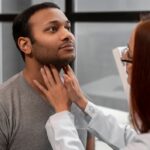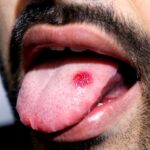Pubic lice, commonly known as “crabs,” are tiny parasitic insects that infest the hair in the genital area. While not a serious medical condition, pubic lice can cause discomfort and embarrassment. Understanding the signs, symptoms, and causes of pubic lice is essential for effective prevention and treatment.
Signs and Symptoms:
- Itching: Persistent itching in the genital area is the most common symptom of pubic lice infestation. This itching is often worse at night when the lice are more active.
- Visible Lice: Pubic lice are small, crab-shaped insects that can be seen with the naked eye. They are typically grayish-white or tan in color and about the size of a pinhead. Adult lice can often be found crawling in the pubic hair or attached to the hair shafts.
- Nits: Nits, or lice eggs, may also be visible in the pubic hair. These tiny white or yellowish oval-shaped eggs are attached to the hair shaft near the skin and can be mistaken for dandruff or other debris.
- Skin Irritation: Infestation with pubic lice can cause redness, inflammation, and irritation of the skin in the genital area. Scratching the affected area can lead to secondary bacterial infections.
- Blue Spots: In some cases, individuals with pubic lice may develop small, blue spots or spots of blood on their skin due to lice bites.
Causes:
- Close Contact: Pubic lice are usually spread through close personal contact with an infested individual. This can occur during sexual activity, but it’s also possible to get pubic lice through non-sexual contact, such as sharing clothing, bedding, or towels with someone who has an infestation.
- Poor Hygiene: While pubic lice can affect people of all hygiene levels, poor personal hygiene can increase the risk of infestation. Keeping the genital area clean and practicing good hygiene habits can help reduce the risk of pubic lice.
- Shared Spaces: Pubic lice can also be contracted by coming into contact with infested items such as bedding, clothing, or upholstered furniture. This is less common but still possible, especially in shared living spaces such as dormitories or shelters.
- Sexual Activity: Engaging in sexual activity with an infested partner is a common way to contract pubic lice. However, it’s important to note that pubic lice can also be spread through non-sexual contact, as mentioned earlier.
Treatment:
Treatment for pubic lice usually involves using over-the-counter or prescription medicated lotions or shampoos that kill the lice and their eggs. It’s essential to follow the instructions carefully and to treat all affected areas of the body. Additionally, washing bedding, clothing, and personal items in hot water and vacuuming upholstered furniture can help eliminate lice and prevent reinfestation.
Pubic lice, or crabs, are a common but treatable condition that can cause discomfort and embarrassment. Recognizing the signs and symptoms of pubic lice, understanding the causes of infestation, and taking appropriate preventive measures are key to effectively managing this condition and reducing its spread. If you suspect you have pubic lice, it’s important to consult with a healthcare professional for proper diagnosis and treatment.










